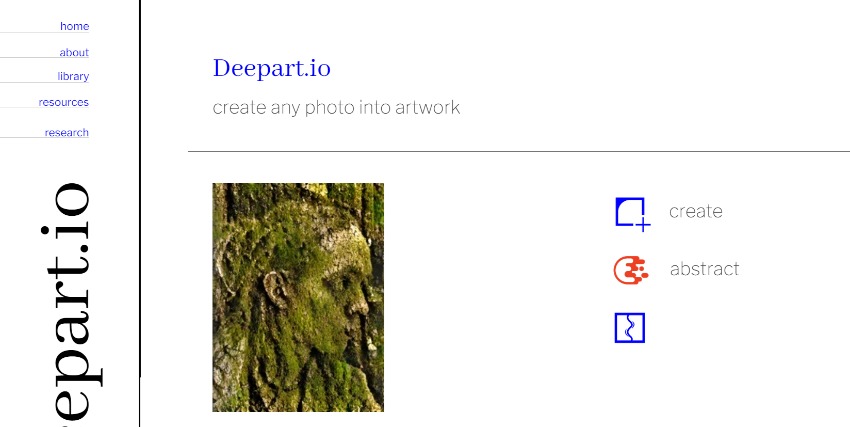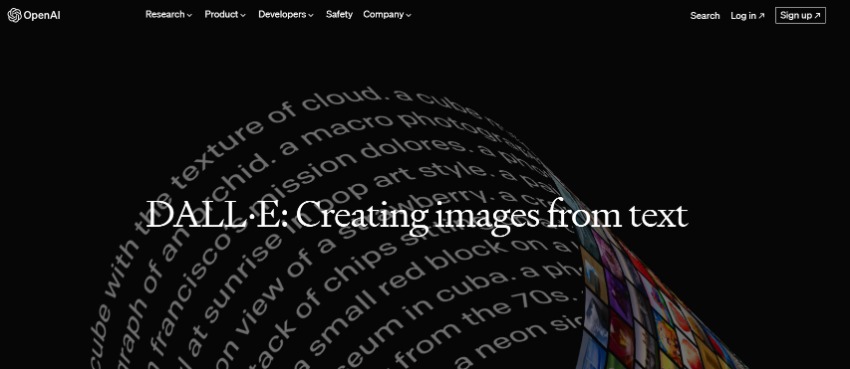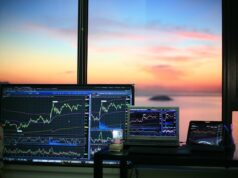Artificial Intelligence (AI) has rapidly transformed various industries, and the world of art is no exception. AI art generators have emerged as powerful tools that blend machine learning algorithms with artistic creativity, enabling artists and enthusiasts to produce unique and captivating artworks effortlessly.
These AI-driven platforms have the ability to mimic different artistic styles, create stunning visuals, and even collaborate with human artists. In this article, we will explore the top 5 best AI art generators that are revolutionizing the art world.
1. DeepArt.io

DeepArt.io is a renowned AI art generator that gained popularity with its ability to recreate images in the style of famous artists such as Van Gogh, Picasso, and Dali.
The platform utilizes deep neural networks to analyze the content of the uploaded image and transform it to resemble the chosen artistic style.
It enables users to experiment with various combinations and unlock the potential of their digital art.
Pros:
1. Wide range of styles: DeepArt.io offers a diverse selection of artistic styles to choose from, providing users with ample creative possibilities.
2. High-quality results: The generated artworks often possess impressive detail and fidelity to the chosen style, showcasing the capabilities of the AI algorithm.
3. Easy-to-use interface: The user-friendly interface makes it accessible to artists of all skill levels, even those who have little experience with AI technology.
Cons:
1. Rendering time: The generation process can be time-consuming, especially for high-resolution images or complex styles.
2. Limited customization: While the platform offers various styles, users have limited control over specific adjustments, such as color palettes or brush strokes.
2. RunwayML

RunwayML is a powerful AI art generator that empowers artists and designers to interact with AI models without extensive coding knowledge. It features a range of creative tools and pre-trained models, making it a versatile choice for various art projects.
Pros:
1. Real-time collaboration: RunwayML allows users to collaborate in real-time, enabling artists to work together seamlessly.
2. Extensive model library: The platform offers a diverse collection of pre-trained models, including those for generating artwork, music, and more.
3. Integration with creative software: RunwayML integrates seamlessly with popular creative software like Adobe Photoshop and Ableton Live, enhancing artists’ workflows.
Cons:
1. Subscription model: While RunwayML offers a free trial, access to certain advanced features requires a subscription.
2. Learning curve: For users new to AI and machine learning, there might be a learning curve in understanding the capabilities and applications of different models.
3. Artbreeder

Artbreeder takes a unique approach to AI art generation by allowing users to blend and evolve images through genetic algorithms. By merging multiple images, users can create stunning artwork that gradually evolves to match their vision.
Pros:
1 Customizable artwork: Artbreeder allows users to fine-tune their creations by adjusting various sliders, offering a high degree of customization.
2. Community sharing: The platform fosters a creative community, enabling artists to share their artwork and inspire others.
3. Evolutionary process: The genetic algorithm allows for intriguing experimentation, as artworks can undergo gradual changes and improvements.
Cons:
1. Low-resolution limitations: The free version of Artbreeder limits the resolution of generated images, which might be a drawback for artists seeking higher-quality outputs.
2. Heavy reliance on the internet: Artbreeder requires a stable internet connection to function, which can be inconvenient in certain situations.
4. DALL-E 2 by OpenAI

DALL-E 2, developed by OpenAI, is a groundbreaking AI art generator that creates images from textual descriptions. Inspired by GPT-3, DALL-E generates images based on specific prompts, opening up new possibilities for creativity.
Pros:
1. Text-to-image synthesis: DALL-E’s ability to generate images from textual descriptions is a remarkable feat, allowing users to express their ideas visually.
2. Unique and surreal artworks: The generated images often possess a dreamlike quality, blurring the line between imagination and reality.
3. Artistic exploration: The platform encourages users to experiment with various prompts, leading to unexpected and innovative results.
Cons:
1. Limited access: As of now, DALL-E is not widely available to the general public, and access might be restricted.
2. AI limitations: While impressive, the AI’s understanding of prompts might still have occasional inaccuracies or inconsistencies.
5. Art AI by Google Arts & Culture

Art AI by Google Arts & Culture is an AI art generator that transforms your photos into artworks inspired by famous artists and art movements. It allows users to explore their creativity by applying various styles to their photographs.
Pros:
1. Integration with Google Arts & Culture: The platform provides a rich art database and educational resources, offering a unique learning experience alongside the AI art generation.
2. User-friendly interface: Art AI is designed to be accessible to a wide audience, making it easy for users to experiment and create.
3. Augmented reality (AR) experience: The platform enables users to visualize their artworks in an AR environment, adding an interactive dimension to the creative process.
Cons:
1. Limited customization: Users have minimal control over specific adjustments in the generated artworks, such as stroke thickness or color intensity.
2. Dependency on existing styles: The styles available are based on existing artworks, which might limit the scope of originality for some users.
Conclusion
In conclusion, AI art generators have revolutionized the way artists and enthusiasts explore their creativity. These top 5 best AI art generators offer a diverse range of features, from mimicking famous artists’ styles to creating unique and surreal visuals.
Whether you are a seasoned artist or a novice, these AI-driven platforms provide exciting opportunities for experimentation and inspiration.









